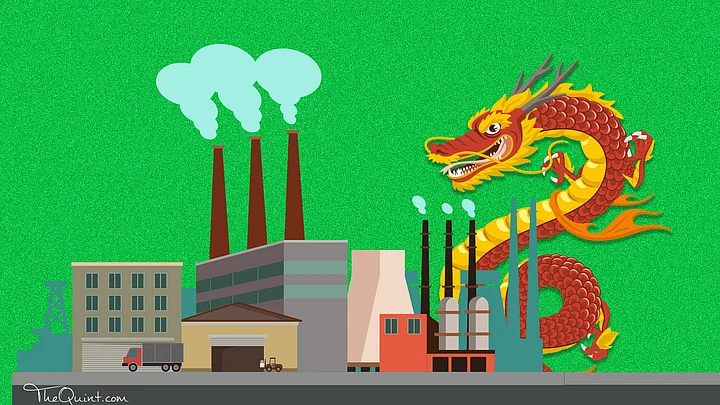Invoking patriotism in the name of boycotting China-made goods is hilarious considering that consumables and durables form an insignificant part of imports from China.
Imposing a blanket ban on Chinese goods is not possible due to WTO laws and even for the sake of argument, if we say that we will stop trading with China, then a question arises from where we will start sourcing our capex requirements. Hostility or uneasy relationship between the countries has little to do with trade relationship in this globalised era.
Volume of trade between US-China ($400 billion), Japan-China ($150 billion) is more than enough to demonstrate that we can’t isolate our neighbour merely by a boycott call. Despite the “Make in India” initiative, we can’t increase our manufacturing capabilities in a short span and therefore we should focus on service exports as an interim measure.
Also Read: Sukna-Based 33 Corps “Very Close” to India-China Border
Rise in Nationalist Sentiment
We always see a rise in ‘swadeshi’ sentiment during festivals like Raskhabandhan and Diwali with a call for banning Chinese goods becoming an annual affair. This time again, the social media is flooded with messages related to the boycott of China-made goods.
Doklam is fueling nationalism of a certain kind with various leaders giving a call for using India-made goods only (i.e. Swadeshi goods). Swadeshi is the synonym for self-sufficiency and we can achieve economic independence only when we are self-reliant. Make in India is an ambitious initiative but it will take time to yield tangible results so till then our decisions should not be driven by emotions only.
Also Watch: Doklam Standoff Explained: Who’s Involved & Why’s India Bothered?
Widening Trade Deficit
Concerns over broadening trade imbalance with China are not new and we have been seeing these kind of protests since last few years. We are concerned about the China-Pakistan Economic Corridor (CPEC), but if we see the volume of trade deficit then one knows how China was able to generate funds for this project. We have to understand the nature and volume of trade pattern with China which is our largest trading partner.
We export the raw materials to China which generates relatively low revenue while we import machineries, etc. from China and the very nature of traded items between these two countries results in imbalance.
Infrastructure equipment (those used in power sector) imported from China will cost more if bought from US or European countries. Thus, if we stop importing from China then the cost of power generation will increase. Similarly the telecom and IT industry is dependent on hardware imported from China.
Also Read: Debate I Doklam Standoff Could End Amicably By October
Checking One-Way Trade
The government is silent on calls for boycott as the officials are aware about the repercussions of any counter move by China. Any similar move by China will impact India due to our dependence on Chinese items being used in infrastructure sector.
India should explore new markets as our export destination. Chinese “One Belt One Road (OBOR)” initiative is aimed to gain significant control in the export markets. We need to be aggressively explore the untapped markets.
There is another aspect which hasn’t got due attention while discussing Indo-China trade. In September 2014 India and China signed a non-binding agreement with an aim to achieve bilateral trade balance by 2019. September would mark the third anniversary of this agreement but India has done very little to check the one-way trade with China.
Commerce Minister Nirmala Sitharaman, in a written answer in the Lok Sabha said that India will endeavour to increase bilateral trade in services particularly Information Technology (IT) & Information Technology Enabled Services (ITES).
We have a huge workforce in IT sector and in the wake of increased protectionism in the US and western countries, India could explore the Chinese market.
(The writer is a Chartered Accountant and can be reached @shshanksaurav. This is a personal blog and the views expressed above are the author's own. The Quint neither endorses nor is responsible for the same.)
(Love your mother tongue? This Independence Day, tell The Quint why and how you love your bhasha. You may even win a BOL t-shirt! Sing, write, perform, spew poetry – whatever you like – in your mother tongue. Send us your BOL at bol@thequint.com or WhatsApp it to 9910181818.)
